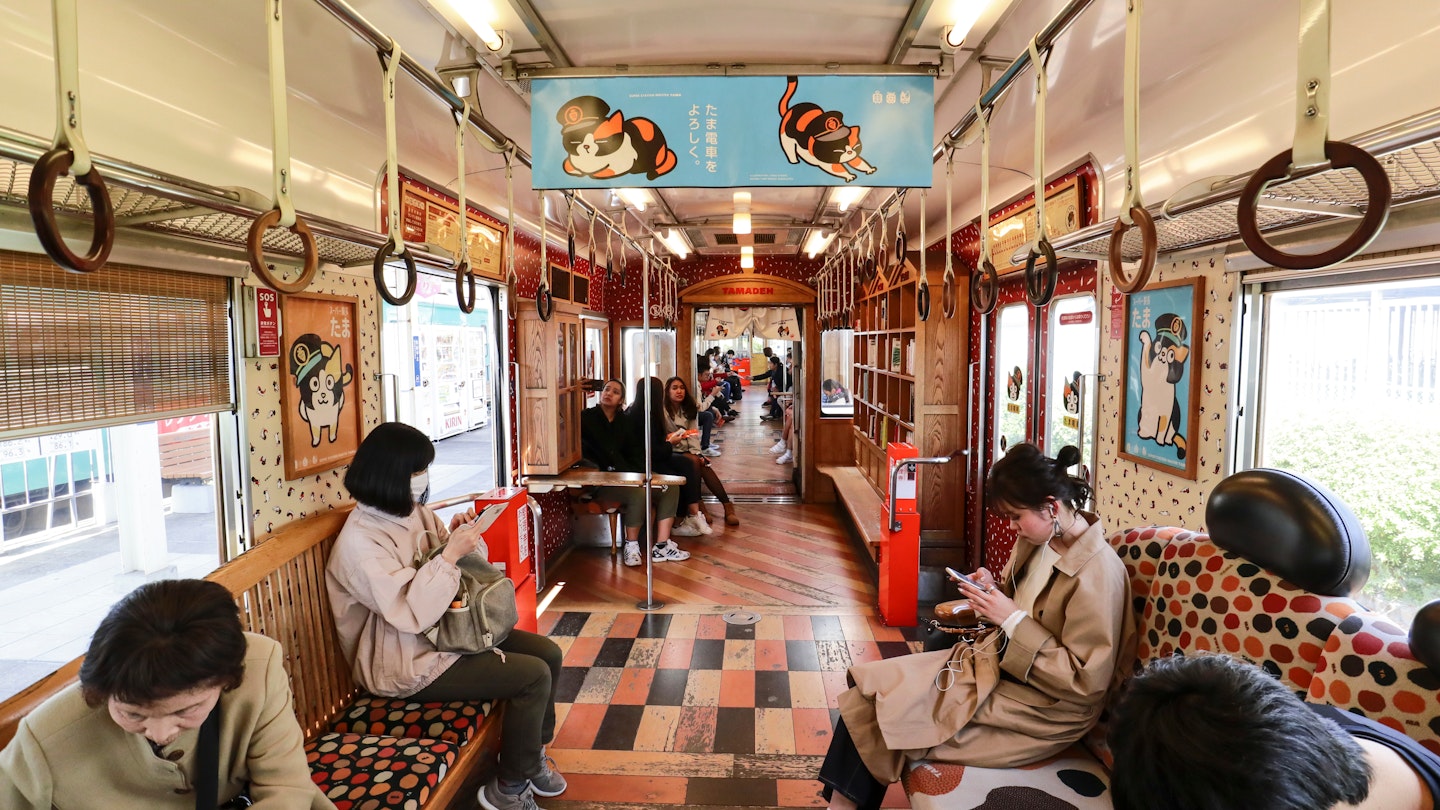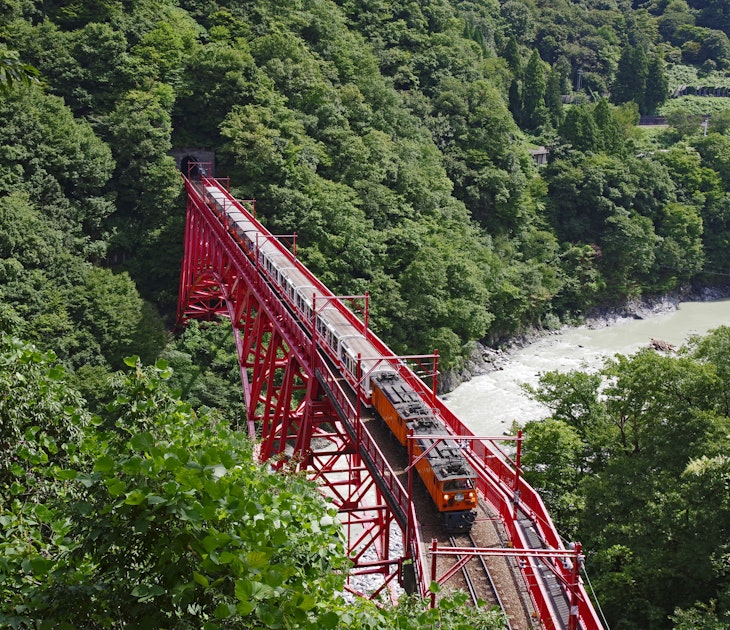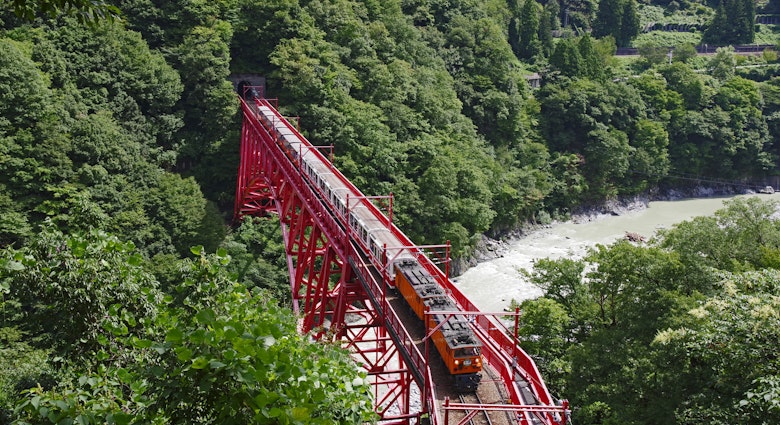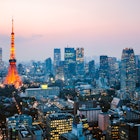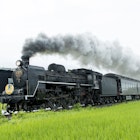Japanese railway enthusiast John Walton shares advice on how to stretch your yen as far as possible on a train trip through Japan.
Whether you’re a train fanatic like me or not, exploring Japan by rail is a pleasure.
The country leads the way for the sheer variety of rail experiences. The network has ultramodern trains, vintage carriages, steam locomotives and every kind of rail runner in between – from slow-travel rural journeys to the fast Shinkansen bullet trains that rocket between the country’s biggest cities.
Anyone traveling to Japan will likely end up on a train at some point. But if you want to create a thorough train itinerary to see the best of the country, some advanced planning is necessary. Where to start? Which trains to take? Where to go? How much time will you need? Should you buy a Japan Rail Pass or not?
I’ve spent more than a decade visiting Japan, often multiple times a year. Traveling across this beautiful and fascinating country by train is one of my favorite things to do in the entire world. Here’s how to build your own Japan rail trip.
1. Define your must-do list
Figure out how much time you have and which destinations are on your must-visit list, and build a route from there
As with any trip, what you can do will be determined by how much time you have and what time of year you visit. Japan is at its most delightful in spring and autumn as summers are very hot and humid everywhere south of Hokkaidō. Avoid national holiday periods like Golden Week (early May) and Obon (summer; usually July or August), when tickets and accommodation are scarce and many attractions close. If you want to do a lot of things that appeal to Japanese kids (amusement parks, anime or manga attractions, and so on), try to visit outside school holidays when they're packed.
Picking the “where” of your trip is entirely up to you and your interests. I'd recommend you think about a theme like visiting Japan’s 12 remaining original historic castles. Or its best temples, shrines and Zen gardens. You might focus on dazzling big-city life, quiet rural trains that wind their way through the mountains, or a specific bit of Japanese popular culture like Pokémon, Studio Ghibli or Evangelion. Plotting out your stops on a map will help you build a route.

2. Figure out where you want to start and finish
Where you fly in and out of may influence your route
The easiest option for most international travelers is to fly to Tokyo. The capital has two airports: Haneda Airport (HND), which is the closest to the city center, and Narita Airport (NRT), about an hour east of the city. Haneda is usually more convenient, though Narita is connected directly to Tokyo Station (and several others) by train. It’s a good option if you want to get out of the capital and on the rails straight away.
Other major international airports like Osaka Kansai (KIX), Nagoya’s Chubu Centrair (NGO), Sapporo’s New Chitose (CTS) and Fukuoka (FUK) are also great alternatives if you’re heading to their respective regions. An open-jaw itinerary – where you start in one city and leave from another – is a great way to maximize your time in Japan and is particularly suited to those who want to slow down and explore by train.
Still, chances are you’ll be starting and ending your trip in Tokyo. I usually try to build a few days at the beginning and end of my trips here to plan and do a few of the many amazing things that the capital has to offer.
3. Find the right pass for your journey
Figuring out your precise travel times could save you money
If you want to do more than just take a return trip between Tokyo and Kyoto the national Japan Rail Pass is great value. is Designed specifically for travelers, there are three versions of the pass, which you can use over consecutive days:
-
the seven-day pass costs ¥50,000 (around US$335);
-
the 14-day pass costs ¥80,000 (around US$540);
-
the 21-day pass costs ¥100,000 (around US$675).
Considering a one-way Shinkansen ticket from Tokyo to Kyoto is ¥13,080 (around US$90), these passes are a no-brainer for most travelers.
Another money-saving option is the regional passes but these can get complicated. I usually recommend them to visitors on longer trips or those who want to cover specific areas of Japan:
- On the westernmost island Kyūshū, JR offers passes in three- (¥20,000; around US$135), five- (¥22,500; around US$152) and seven-day (¥25,000; around US$169) versions;
- JR-East to the north of Tokyo offers the five-day Tohoku Area Pass for ¥30,000 (around US$202) and the five-day Nagano-Niigata Area Pass for ¥27,000 (around US$182);
- JR-West, covering the main island of Honshū west of Kyoto, offers a staggering and frankly confusing range of 10 passes for specific areas.

4. Choose how much time you want to actually be on a train
Separate passes for different legs can make things easier
Though the value of a rail pass increases the more you use it, it will constitute a big chunk of your travel budget. For me, the pass will typically cost about a third of the total outlay of a trip. Even as an avid rail fan whose idea of a great time includes whizzing around the country on a Shinkansen at 200mph (320km/h) or relaxing on a fancy Limited Express, I don't usually do more than a week of rail travel without settling down in one place for a few days. The same goes when I'm taking a cultural Joyful Train trip or a countryside trundle on tiny rural trains.
As a rule, if I’m spending two weeks in Japan, I’ll book a seven-day Japan Rail Pass that begins a few days after I arrive in Tokyo and ends a few days before my flight home. If I’m here for three weeks, I might buy two separate seven-day passes, with some free time for a cultural city like Kyoto, Nara, or Kanazawa in between. Sometimes, I'll stick with one rail pass plus a one-way trip that takes me back to Tokyo.

5. Plan your weekend travel early
Some of the most delightful trains run on weekends
Plan your weekends first. This is when cultural excursion trains known as Joyful Trains run. They are themed trains covering specific routes (think Hello Kitty or Pokémon). Both the JR-East and JR Kyūshū regions have lots of Joyful Trains, many made especially for sightseeing. They cover some incredible terrain.
I highly recommend JR-East’s SL (for “steam locomotive”) Gunma Yokokawa, which chugs from Takasaki to the Usui Tōge Railway Village at Yokokawa. JR Kyūshū’s Two Stars 4047 in the Nagasaki area follows the beautiful seaside route of the old main line. I also love JR-East’s High Rail 1375, which travels along Japan’s highest railway line and also offers a nighttime stargazing trip.
Although it's best to book via the automated ticket machines, these usually require some previous experience with Japanese train travel. Newbies should book their trips at any JR Service Center or ticket counter (the midori no madoguchi, with a green symbol of a person relaxing on a seat).

6. Plan scenic trips and other highlights during the week
Hit popular attractions in the quieter mid-week period
Once you’ve planned your weekend trip(s), think about how else you want to fill in your journey in between your starting point, weekend Joyful Trains and your endpoint. With fewer tourists, weekdays are a great time to visit popular attractions.
You’ll also find reduced midweek rates at traditional Japanese resort hotels, ryokan, minshuku and other accommodations. Take a couple of days out of your schedule to take a soak at a mountain hot-spring onsen. It's a wonderfully Japanese way to relax.
Weekdays are made for longer train trips into Japan’s beautiful countryside, including on the long-distance Limited Express trains (slower than the Shinkansen, yet faster than local trains) or the wonderfully charming rural local trains that crisscross Japan’s countryside. Many have beautiful views; some of my favorites are JR Central’s Hida from Nagoya to Toyama through the Japanese Alps and JR East’s Tsugaru from Aomori to Akita across the Tsugaru plain – a snowy must-do in winter.
I also love JR Hokkaido’s Okhotsk/Taisetsu from Sapporo/Asahikawa to Abashiri, which offers a peek into this remote island, and JR Shikoku’s Shiokaze from Okayama to Matsuyama, across the incredible Great Seto Bridge and beautiful countryside. Local trains are beautiful, too. JR-operated and private railway lines often trundle through areas of Japan without any other kind of rail service. Chances are you’ll be the only non-local in a small railcar where the other passengers are schoolchildren, grandmothers and folk going about their daily business.
JR Hokkaido’s Senmo Line between Abashiri and Kushiro runs through the Kushiro marshlands, where Japanese red-crowned cranes make their home. The Shinano Railway in Nagano Prefecture uses delightful vintage 115 series trains along the old Shinetsu Main Line. JR East’s Yamada Line from Morioka to Miyako is a springing-off point for the gorgeous Sanriku Coast, while the Wakayama Electric Railway south of Osaka is famed for its stationmaster cats at Kishi. And you can’t go wrong on almost any local line in Kyūshū, particularly in the area around Nagasaki.

If I could do it all again…
I’d eat more ekiben, the local bento-box lunches available at many stations that are made to take on board. Tiny rural stations may have a soba, ramen or udon noodle store or something similar in the waiting room – I’d eat more of that, too.
Bring a few essential things with you: a two-pin US-style fast phone charger, a power bank (as not all trains have power points) and a reusable shopping bag for snacks and drinks. Use the layers strategy when you pack – Japanese trains are much warmer than many other countries in cool weather and the air conditioning may not be as frosty as you’d expect elsewhere.
Take nothing bigger than a medium carry-on on the train, and use Japan’s excellent luggage delivery services like Kuroneko Yamato to deliver your suitcases between cities rather than toting them with you. This is especially important in peak hours or on non-express trains. Note: on some Shinkansen, you must make a baggage reservation if your luggage is more than 160 linear cm (length x width x height).

